Abstract
Dutch vegetable production is characterised by efficient agriculture, especially through the use of greenhouse cultivation. According to data for 2022, cucumbers have the largest production volume, reaching 400kt. Cucumber production has become stable thanks to the expanded use of greenhouses. The next most popular product is tomatoes, and when looked at by use, production volume is divided into processed and fresh use. Processing tomatoes, mainly used for canning and sauces, contribute to the Dutch processed food industry. On the other hand, in terms of land use, cultivation of tomatoes and cucumbers is particularly popular, as these vegetables are highly land efficient and produce large yields per area. In the Netherlands, highly technologically advanced agriculture takes advantage of the country’s climatic conditions, and vegetable production remains at a stable and high level. Additionally, the ongoing introduction of sustainable cultivation methods and recycling technologies to reduce environmental impact is also attracting attention.
Production (by vegetables)
Cucumber has occupied an important position in Dutch vegetable production with long-term data covering the period 1961 to 2022. Notably, the highest figure was 537 kt recorded in 1994, reflecting the heyday of greenhouse agriculture in the Netherlands. Since then, cucumber production has been declining, with production in 2022 remaining at only 74.6% of its peak. This decrease is thought to be due to the fact that advances in greenhouse cultivation technology have made yields more stable and efficient, thereby reducing the amount of land area required for cultivation. Also, production of other greenhouse grown vegetables such as tomatoes and peppers has increased, replacing cucumbers. Dutch agriculture is supported by advanced technology and efficient land use, making it possible to achieve large yields on a small area of land. Furthermore, the introduction of sustainable agricultural techniques is progressing, reducing the environmental impact and establishing a stable production system. Thus, although cucumber production has decreased, Dutch agriculture as a whole continues to evolve.
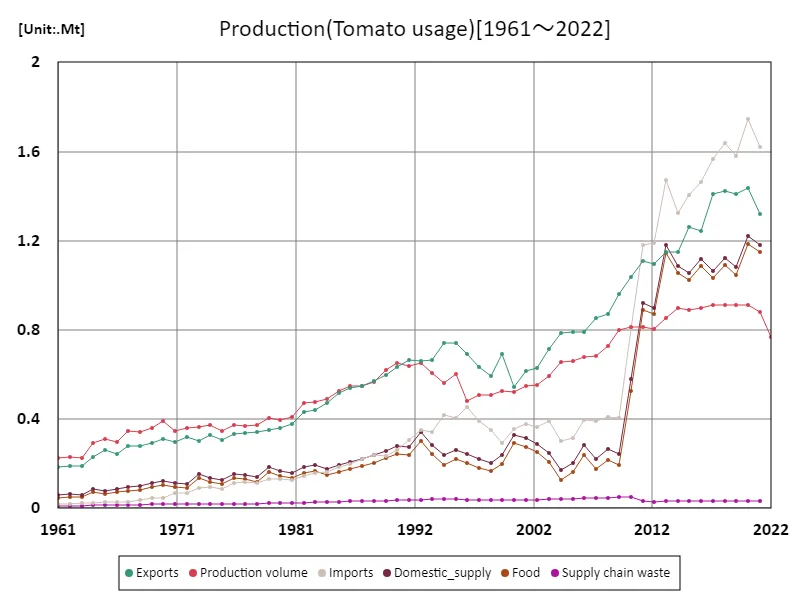

The maximum is 1.75Mt[2020] of Imports, and the current value is about 92.8%
Yield(by vegetable)
Cucumber yields in the Netherlands showed a significant increase between 1961 and 2022, peaking at 743 t/ha in 2015. This high peak yield reflects the dramatic increase in crop yield per unit of land due to improvements in greenhouse cultivation techniques and the introduction of efficient hydroponic cultivation methods. Cucumbers occupy an important position in Dutch vegetable production, and the advancement of greenhouse cultivation in particular has made it possible to ensure a stable supply all year round and has increased production volumes. However, by 2022, it is estimated to have fallen to 85.5% of its peak, a decline likely due to a reduction in cultivated area and a shift to other greenhouse-grown vegetables such as tomatoes and peppers. Nevertheless, the Netherlands is one of the world’s leading cucumber producers, and technological innovations have enabled it to maintain high yields on small areas of land. Thanks to the introduction of sustainable agricultural techniques and environmentally friendly cultivation methods, cucumber production is stable.
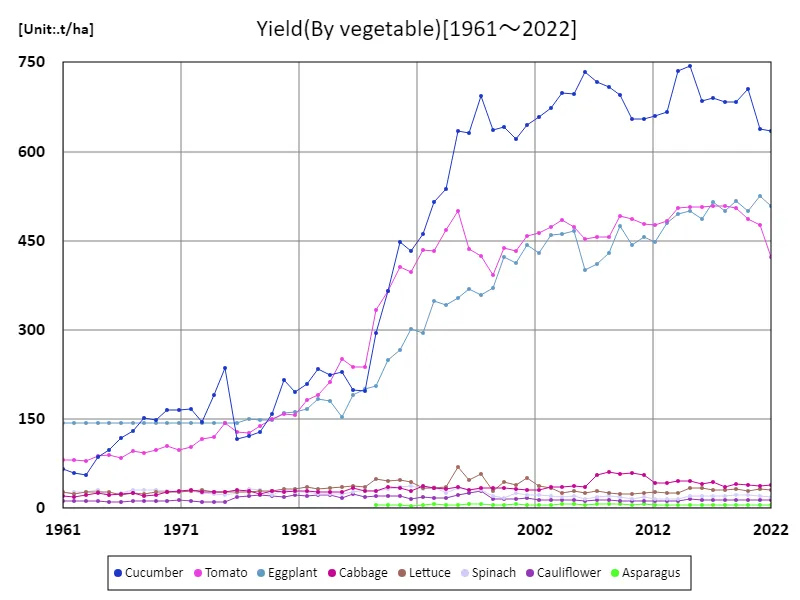

The maximum is 743t/ha[2015] of Cucumber, and the current value is about 85.5%
Land use (by vegetables)
In terms of land use in vegetable production in the Netherlands in 2022, lettuce will occupy the largest area, reaching 9.54 kha. This shows that lettuce is widely grown in Dutch vegetable production. Lettuce is well suited to warm climates and efficient greenhouse growing conditions, making it a reliable source of supply. The average land use area for vegetables is 3.66kha, which maintains a good balance with other vegetables. The total area devoted to vegetable production in the Netherlands is 29.3 kha, which shows how efficient Dutch agriculture is. In particular, advances in greenhouse cultivation have led to advances in technology that allow for high yields on less land. Through intensive land use and efficient crop selection, the Netherlands is able to produce a wide variety of vegetables on a limited land area, making its agriculture internationally competitive. Furthermore, as sustainable agricultural techniques and environmental awareness advance, it is expected that land use efficiency will continue to improve.
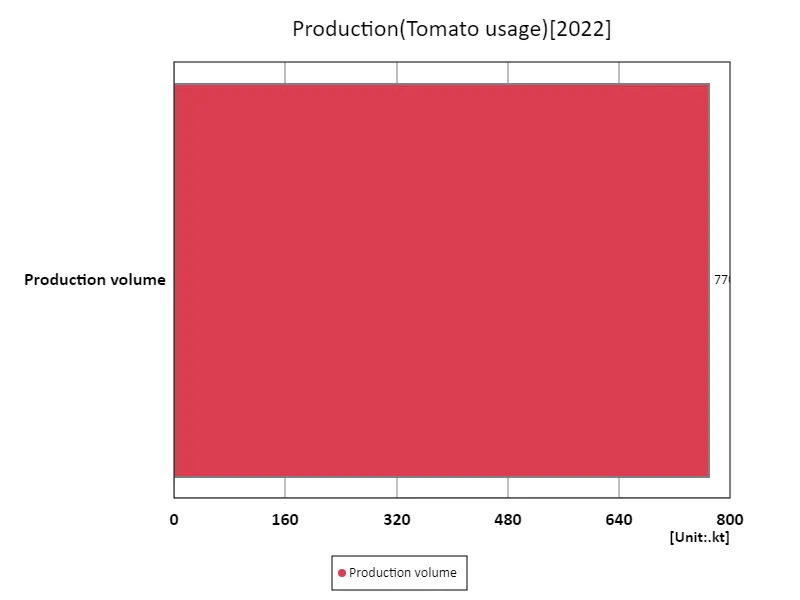

The maximum is 770kt of Production volume, the average is 770kt, and the total is 770kt
Tomato usage
Looking at data on tomato production by use in the Netherlands from 1961 to the present, tomato imports have been the largest, reaching 1.75 Mt. The Netherlands in particular occupies an important position worldwide in tomato production and export, exporting more tomatoes than it consumes domestically. This is due in part to the Netherlands’ highly efficient greenhouse cultivation techniques and agricultural methods that make the most of the country’s climate, which have allowed tomato production to remain at a stable, high level. Tomatoes are also broadly divided into fresh and processed tomatoes, and processed tomatoes are often used to make products such as ketchup, sauces and juice, which have a major impact on the Dutch food industry. Furthermore, export destinations are mainly European countries, and the Netherlands is taking advantage of its strengths as a tomato producing country to improve transportation efficiency and improve varieties to meet market needs. In recent years, there has been an increased focus on sustainable cultivation methods and reducing the environmental impact, and environmentally friendly agricultural techniques such as reducing greenhouse gas emissions and reusing water are being introduced.
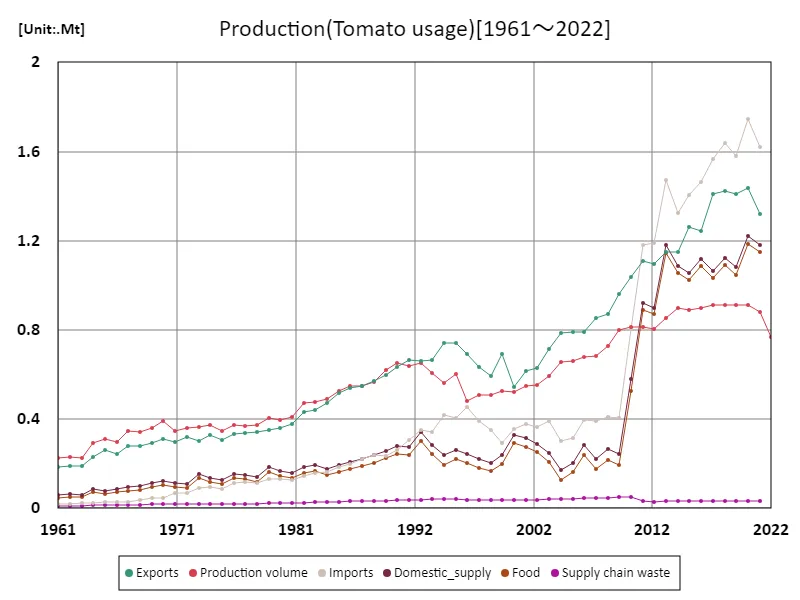

The maximum is 1.75Mt[2020] of Imports, and the current value is about 92.8%
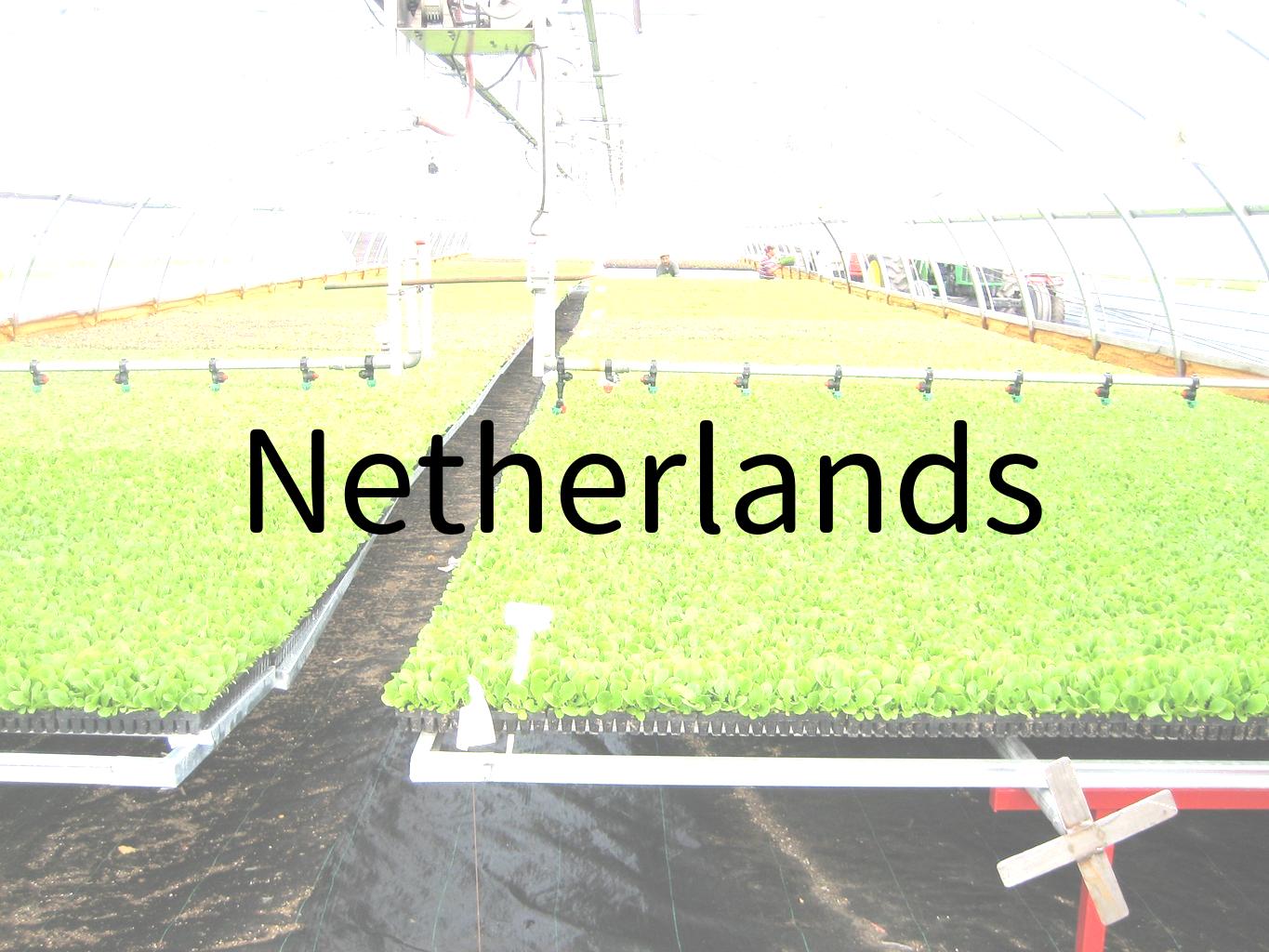


Comments